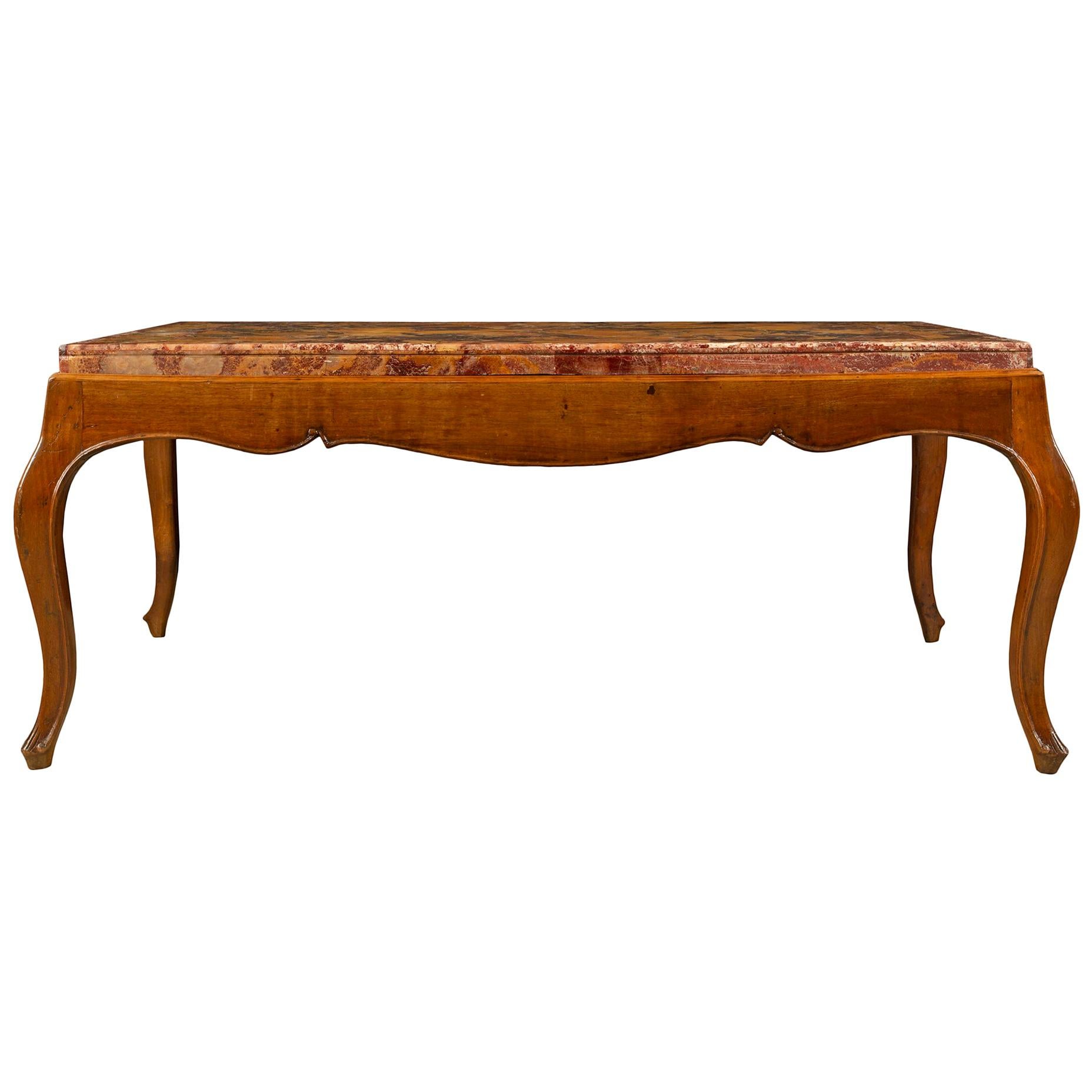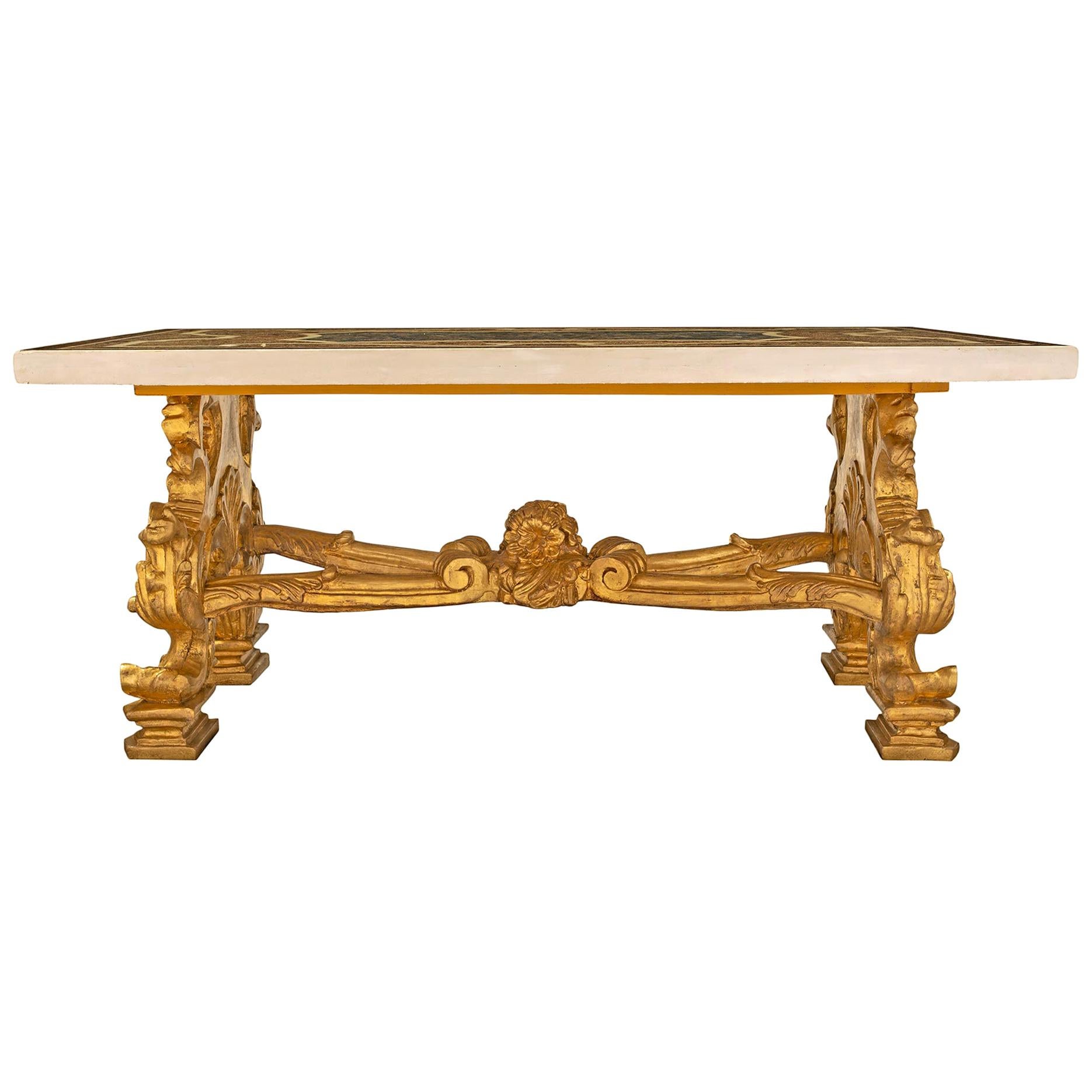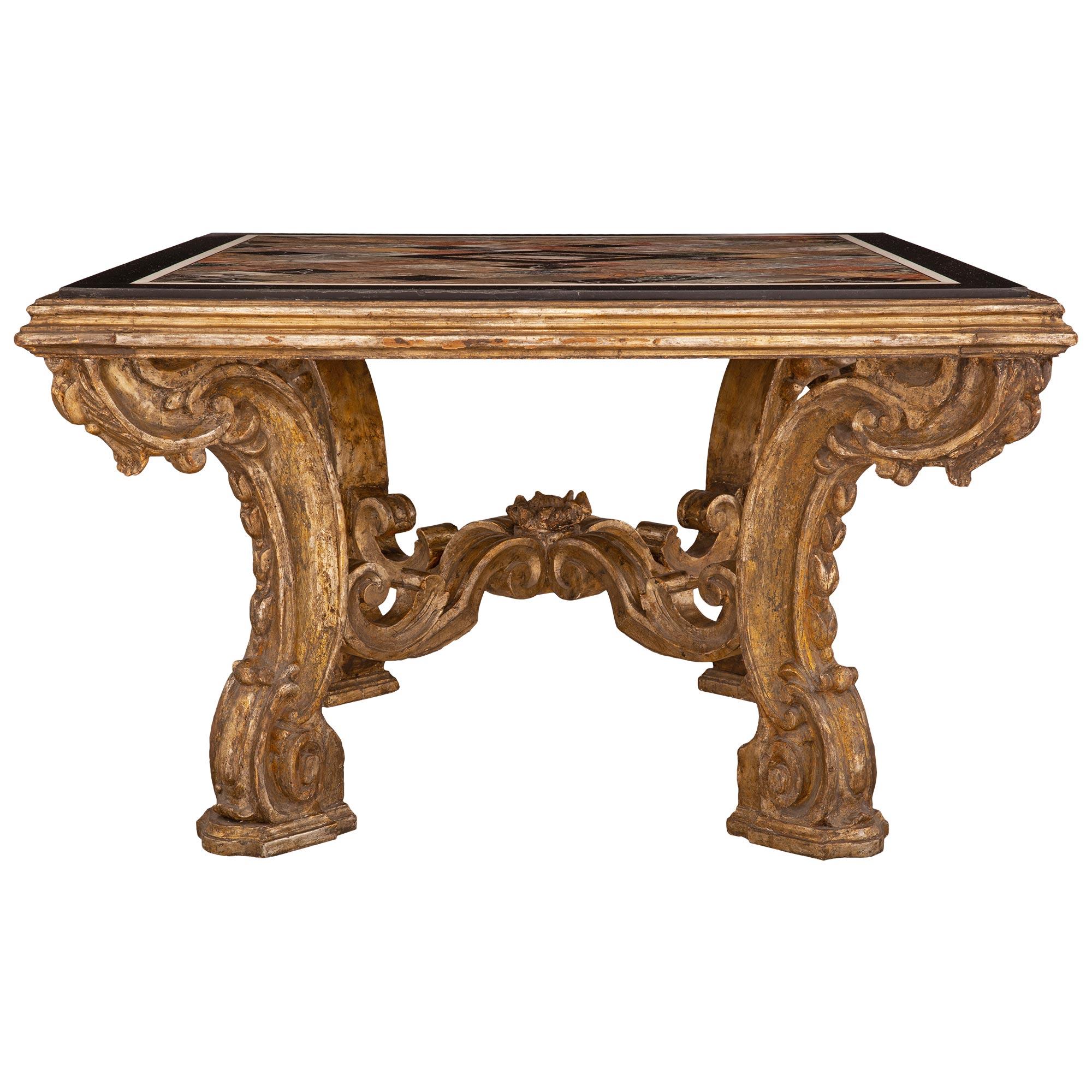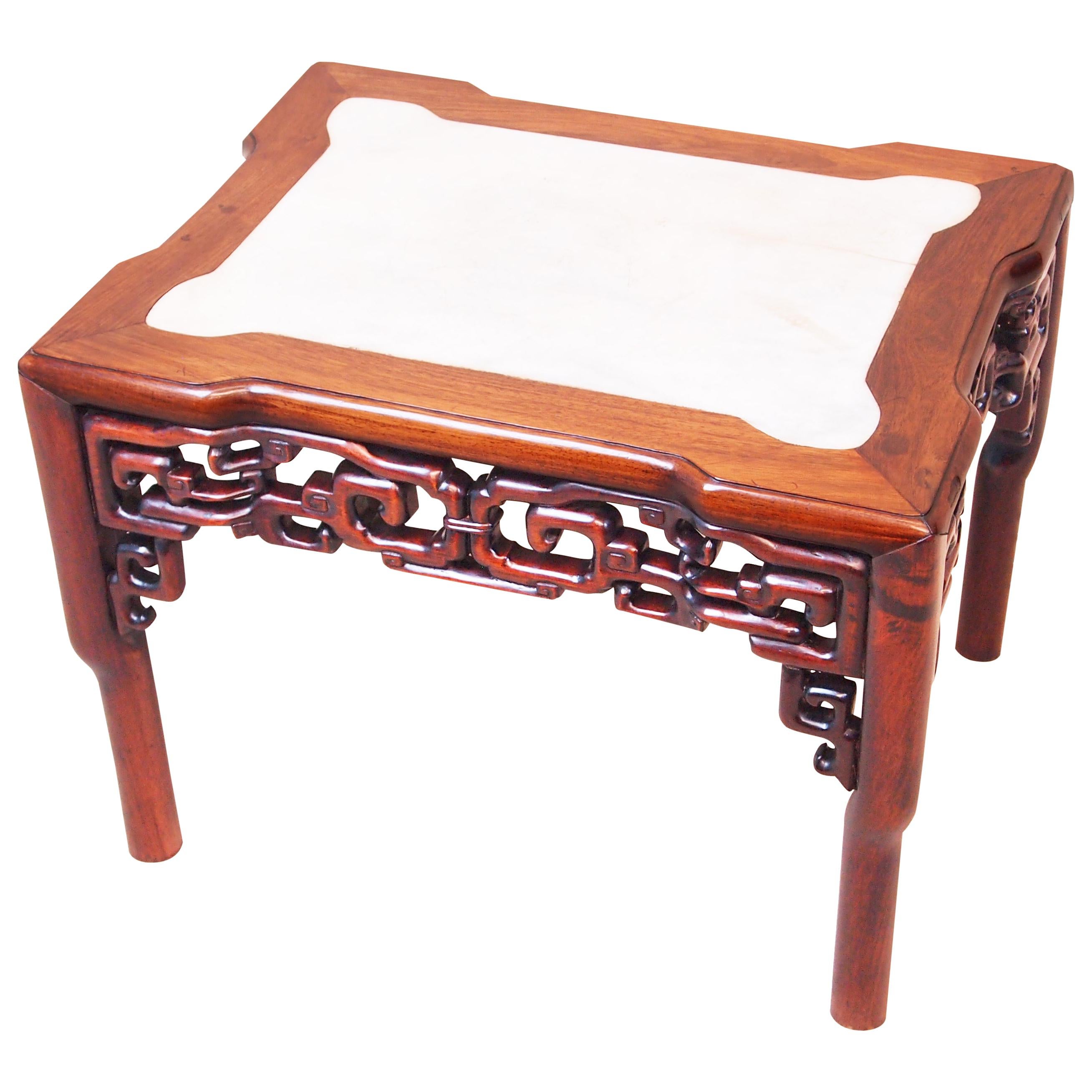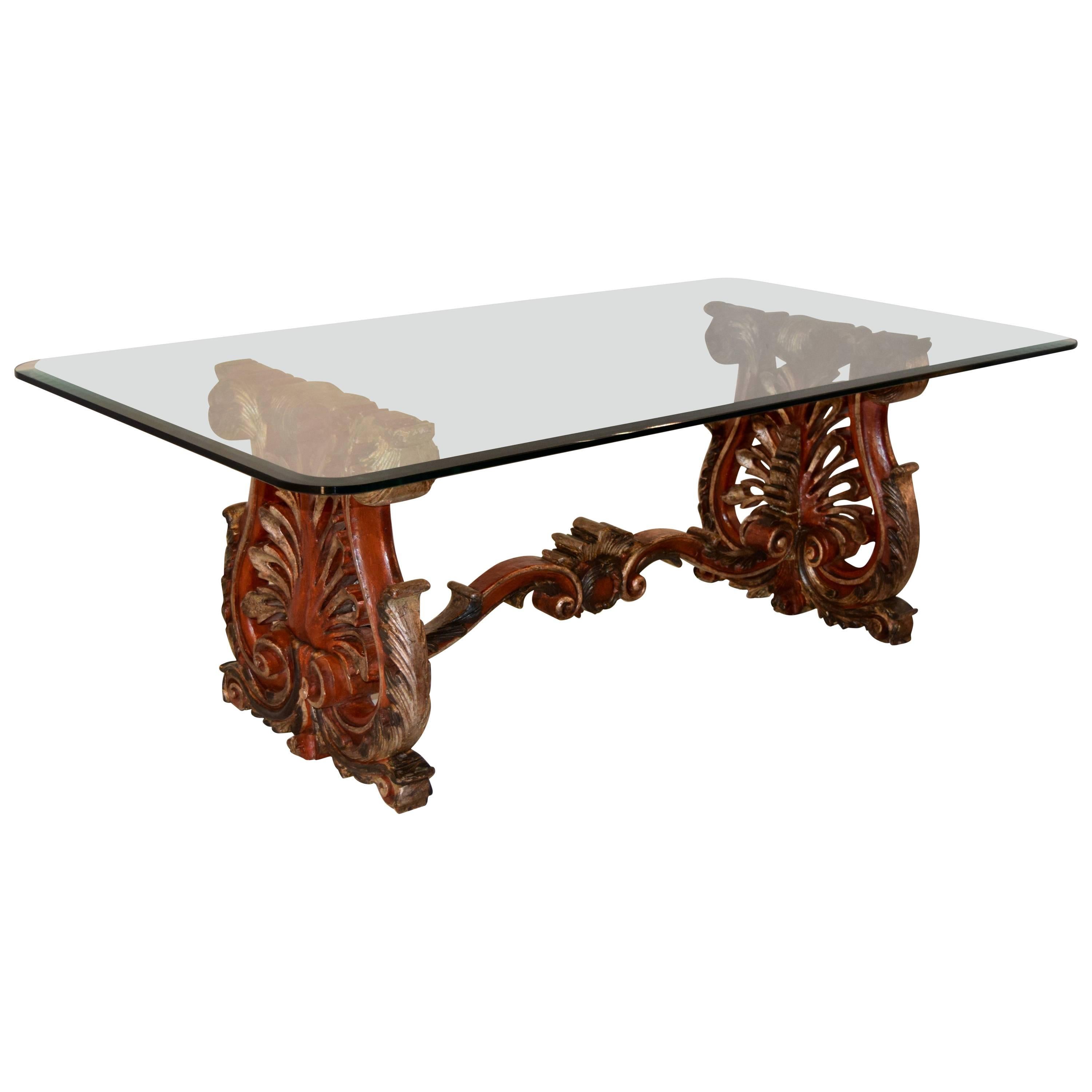Items Similar to Italian 19th Century Greco-Roman Style Marble Bas-Relief Frieze, Coffee Table
Want more images or videos?
Request additional images or videos from the seller
1 of 12
Italian 19th Century Greco-Roman Style Marble Bas-Relief Frieze, Coffee Table
About the Item
A Very Fine Italian 19th century Greco-Roman style carved Carrara marble bas-relief Frieze, after the antique. The finely carved white marble frieze in relief, depicting a mythological scene of daily life in Ancient Rome in a Roman baths setting; with figures of Pan playing flute to dancing maidens, Roman Gods, children, a plebeian worker and a herm. The frieze has now been framed within a modern rouge Royal marble frame and converted into a twin-pedestal coffee table with a glass top. The coffee table setting is modern. The Carrara marble frieze is circa 1860-1870*.
Bas-relief is a type of carved relief (sculpture) that has less depth to the faces and figures than they actually have, when measured proportionately (to scale). This technique keeps the natural shapes of the figures and allows the work to be seen from many angles without twisting the figures themselves.
There is a continuation of the bas-relief technique into the next category, altorilievo, or high relief. High relief makes deeper images than bas-relief. Instead of shallow backgrounds that are a few inches (cm) deep at most, they can be up to several feet (a few meters) deep in altorilievo.
Some of the best examples of bas-relief are the Assyrian Lion Hunt Reliefs, which are housed at the British Museum. The attention to detail and appearance of the lions moving make them stand out, especially for the time period they were made in.
Ancient Roman bathing played a major part in ancient Roman culture and society. It was one of the most common daily activities and was practiced across a wide variety of social classes. Though many contemporary cultures see bathing as a very private activity conducted in the home, bathing in Rome was a communal activity. While the extremely wealthy could afford bathing facilities in their homes, private baths were very uncommon, and most people bathed in the communal baths (thermae - therms). In some ways, these resembled modern-day destination spas as there were facilities for a variety of activities from exercising to sunbathing to swimming and massage.
Such was the importance of baths to Romans that a catalogue of buildings in Rome from 354 AD documented 952 baths of varying sizes in the city. Public baths became common throughout the empire as a symbol of "Romanitas" or a way to define themselves as Roman. They were some of the most common and most important public buildings in the empire as some of the first buildings built after the empire would conquer a new area.
Although the wealthiest Romans might set up a bath in their townhouses or their country villas, heating a series of rooms or even a separate building especially for this purpose, and soldiers might have a bathhouse provided at their fort (as at Cilurnum on Hadrian's Wall, or at Bearsden fort), they still often frequented the numerous public bathhouses in the cities and towns throughout the empire.
Small bathhouses, called balneum (plural balnea), might be privately owned, while they were public in the sense that they were open to the populace for a fee. Larger baths called thermae were owned by the state and often covered several city blocks. The largest of these, the Baths of Diocletian, could hold up to 3,000 bathers. Fees for both types of baths were quite reasonable, within the budget of most free Roman males.
Some of the earliest descriptions of western bathing practices came from Greece. The Greeks began bathing regimens that formed the foundation for modern spa procedures. These Aegean people utilized small bathtubs, washbasins, and foot baths for personal cleanliness. The earliest such findings are the baths in the palace complex at Knossos, Crete, and the luxurious alabaster bathtubs excavated in Akrotiri, Santorini; both date from the mid-2nd millennium BC. They established public baths and showers within their gymnasium complexes for relaxation and personal hygiene.
Greek mythology specified that certain natural springs or tidal pools were blessed by the gods to cure disease. Around these sacred pools, Greeks established bathing facilities for those desiring to heal. Supplicants left offerings to the gods for healing at these sites and bathed themselves in hopes of a cure. The Spartans developed a primitive steam bath. At Serangeum, an early Greek balneum (bathhouse, loosely translated), bathing chambers were cut into the hillside into the rock above the chambers held bathers' clothing. One of the bathing chambers had a decorative mosaic floor depicting a driver and chariot pulled by four horses, a woman followed by two dogs, and a dolphin below. Thus, the early Greeks used natural features, but expanded them and added their own amenities, such as decorations and shelves. During the later Greek civilization, bathhouses were often built in conjunction with athletic fields.
*: The marble frieze may even be an earlier piece
Frieze Width: 55 3/4 inches (141.6 cm)
Frieze Height: 12 1/2 inches (37.8 cm)
Frieze Depth: 4 inches (10.2 cm)
Coffee Table Width: 60 1/4 inches (153 cm)
Coffee Table Height: 17 inches (43.2 cm)
Coffee Table Height with Glass Top: 17 1/4 inches (43.8 cm)
Coffee Width: 17 3/8 inches (44.2 cm)
Coffee Table Width with Glass Top: 21 1/2 inches (54.6 cm).
- Dimensions:Height: 17.25 in (43.82 cm)Width: 64 in (162.56 cm)Depth: 21.5 in (54.61 cm)
- Style:Greco Roman (In the Style Of)
- Materials and Techniques:
- Place of Origin:
- Period:
- Date of Manufacture:circa 1860-1870
- Condition:Repaired: Overall current condition is very good. There is a professional restoration to the center of the frieze which has been reinforced with steel bars from the back of the frieze. Minor hairlines and age losses, finely detailed carving and very decorative. Wear consistent with age and use. Minor losses. Minor fading. Overall current condition is very good. There is a professional restoration to the center of the frieze which has been reinforced with steel bars from the back of the frieze. Minor hairlines and age losses, finely detailed carving and very decorative.
- Seller Location:Los Angeles, CA
- Reference Number:
About the Seller
5.0
Vetted Seller
These experienced sellers undergo a comprehensive evaluation by our team of in-house experts.
Established in 1982
1stDibs seller since 2016
113 sales on 1stDibs
Typical response time: <1 hour
- ShippingRetrieving quote...Ships From: Los Angeles, CA
- Return PolicyThis item cannot be returned.
More From This SellerView All
- Lifesize Italian 19th Century Specimen Marble Bust of a Greco-Roman WarriorLocated in Los Angeles, CAA very fine and mpressive life-size Italian, early 20th century marble bust of a Greco Roman Warrior, probably Hercules, after the antique. The large beautifully carved and decorated...Category
Early 20th Century Italian Greco Roman Busts
MaterialsMarble, Agate, Lapis Lazuli
- Italian 19th-20th Century Neoclassical & Greco-Roman Style Scagliola Wall PlaqueLocated in Los Angeles, CAA large Italian 19th-20th century neoclassical and Greco-Roman style architectural Scagliola wall plaque depicting chariots, horses, allegorical maidens and gods, inlaid and painted ...Category
Antique Early 1900s Italian Greco Roman Decorative Art
MaterialsOther
- Italian 19th-20th Century Neoclassical & Greco-Roman Style Scagliola Wall PlaqueLocated in Los Angeles, CAA large Italian 19th-20th century neoclassical and Greco-Roman style architectural scagliola wall plaque depicting chariots, horses, allegorical maidens and gods, inlaid and painted ...Category
Antique Early 1900s Italian Greco Roman Decorative Art
MaterialsOther
- Italian 19th Century Bronze Sculpture Group of a Two-Horse Roman Chariot & RiderLocated in Los Angeles, CAA fine and large Italian 19th century Greco Roman style brown patinated bronze sculpture group of a two-horse Roman Chariot and rider in a dark patina, raised on a fitted Verde d'alp...Category
Antique 19th Century Italian Greco Roman Figurative Sculptures
MaterialsMarble, Bronze
- Lifesize Italian 19th Century Marble Figure of Cleopatra by Eliseo FattoriniBy Eliseo Tuderte Fattorini 1Located in Los Angeles, CAEliseo Tuderte Fattorini (Italian, 1830-1887). A very fine and lifesize Italian, 19th century marble figure of Cleopatra. The impressive 'qu...Category
Antique 19th Century Italian Greco Roman Figurative Sculptures
MaterialsMarble
- French 19th Century Renaissance Revival Style Gilt-Bronze & Walnut Coffee TableLocated in Los Angeles, CAA Fine and Rare French 19th Century Renaissance Revival Style Gilt-Bronze and Walnut coffee table with marble top. The assembled Corinthian gilt-bronze capital, now converted into a ...Category
Antique Late 19th Century Classical Greek Center Tables
MaterialsMarble, Bronze
You May Also Like
- Italian 19th Century Louis XV Style Walnut and Marble Coffee TableLocated in West Palm Beach, FLA very handsome Italian 19th century Louis XV style walnut and marble coffee table. The table is raised by Fine cabriole legs with an el...Category
Antique 19th Century Italian Louis XV Coffee and Cocktail Tables
MaterialsMarble
- Italian 19th Century Baroque Giltwood and Marble Coffee TableLocated in West Palm Beach, FLA sensational Italian 19th century Baroque giltwood and marble coffee table. The table is raised by impressive and most decorative scr...Category
Antique 19th Century Italian Baroque Coffee and Cocktail Tables
MaterialsMarble
- Italian 19th Century Mecca and Specimen Marble Coffee TableLocated in West Palm Beach, FLA sensational and large scale Italian 19th century mecca and specimen marble coffee table. The square carved mecca base is raised by scrol...Category
Antique 19th Century Italian Coffee and Cocktail Tables
MaterialsBelgian Black Marble
- Frieze, Coffee Table, Functional Art Sculpture by Eduard LocotaBy Eduard LocotaLocated in Timisoara, ROFrom extremely detailed 3D scans of the most important classical sculptures of all times, Eduard Locota has digitally sliced and extracted the essential portion of the artwork, then ...Category
21st Century and Contemporary Balkan Modern Coffee and Cocktail Tables
MaterialsCeramic, Acrylic, Fiberglass
- 19th Century Oriental Hardwood & Marble Coffee TableLocated in Bedfordshire, GBA very good quality mid-19th century oriental hardwood coffee table having inset marble top over elegant pierced frieze raised on cabriole legs (Much larger than the more commonly seen opium tables which use their curved ends to stand on rather than actual legs this coffee table has been produced around the mid-19th century in China specifically to be shipped to the western markets. These days it will perfectly serve the purpose which very few other types of genuinely antique furniture...Category
Antique Mid-19th Century Chinese Victorian Coffee and Cocktail Tables
MaterialsHardwood
- 19th Century Italian Painted Coffee TableLocated in High Point, NC19th century hand-carved and painted wooden coffee table from Italy. The end supports are trestle shaped and are finely carved with acanth...Category
Antique 19th Century Italian Baroque Coffee and Cocktail Tables
MaterialsGlass, Fruitwood, Paint
